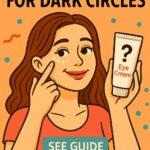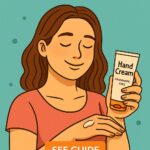
LED masks use visible red light and often near-infrared to encourage collagen and calm redness. Think steady, gentle improvements rather than overnight change. Most people notice glow and evenness first, then fine line softening over 6 to 12 weeks.
- Best mid-price silicone mask for glow + comfort: iRestore Red Light Therapy for Face — flexible, strap-on design with red plus near-infrared LEDs, auto shut-off and simple 10-minute sessions. Rating: 4.5/5
- Best for ageing and breakouts in one device: Dr Dennis Gross FaceWare Pro red plus blue with three modes and 3-minute sessions. Rating: 4.6/5
- Best value full-face mask: CurrentBody Skin LED Light Therapy Mask flexible silicone, red plus near-infrared with strong owner feedback. Rating: 4.5/5
Disclosure: This guide may contain affiliate links. If you buy through our links, we may earn a small commission at no cost to you.
Deep dives
iRestore Red Light Therapy for Face
Wavelengths: Red and near-infrared (manufacturer publishes the exact nanometres on the product page)
Session time: ~10 minutes per session, 3–5 times weekly
Modes: Single combined red + near-infrared mode (no blue mode)
Fit: Soft silicone with adjustable strap; even coverage over cheeks and forehead
Why it stands out
A comfortable, flexible mask that delivers even, consistent light without hard pressure points. The simple one-button routine and auto shut-off make it very realistic for busy evenings. Most owners report an improvement in overall glow and tone first, with fine line softening after several weeks of steady use.
Best for
- Dullness, early fine lines, mild redness
- Users who want a set-and-forget routine with short, regular sessions
- Those who prefer silicone fit over rigid plastic shells
Watch outs
- No blue-light mode for breakouts; pair with a separate acne routine if needed
- Results rely on consistency; aim for 8–12 weeks before judging
- As with any LED, avoid use if you’re on photosensitising meds/herbs (e.g., isotretinoin, doxycycline, St John’s wort) or have a light-sensitivity condition; check with your clinician
How to use
- Start with clean, dry skin. Skip strong acids/retinoids on treatment nights if you’re sensitive.
- Wear the mask for the set ~10 minutes; eyes closed or with the provided protection if you’re light-sensitive.
- After, apply a hydrating serum and moisturiser. Use broad-spectrum SPF in the day.
- Stick to 3–5 sessions per week. Take progress photos every 4 weeks to track changes.
Pros
- Comfortable silicone fit; even light distribution
- Combined red + near-infrared for surface glow and deeper support
- Auto timer, simple routine; easy to stay consistent
Cons
- No dedicated blue mode for acne
- Needs regular use for visible change
- Strap wear over time is possible (as with most silicone masks)
Rating: 4.5/5
Dr Dennis Gross FaceWare Pro
Wavelengths: Red ~630 nm, Blue ~415 nm
Session: 3 minutes, daily if you like
Why it stands out: Three modes in one mask. Red for collagen support, blue for breakout bacteria, or a combined mode if you want both. Short sessions are realistic on busy days.
Best for: Early lines plus frequent T-zone breakouts.
Watch outs: Hard shell fit is less flexible than silicone.
How to use: Use the combined mode on most days, then spot treat breakouts with an extra blue cycle.
Pros
- Multi-mode device for ageing plus acne
- Very short sessions
- Strong brand support and accessories
Cons
- Rigid fit does not suit every face
- Can leave slight pressure marks after use
Rating: 4.6/5
CurrentBody Skin LED Light Therapy Mask
Wavelengths: Red ~633 nm plus near-infrared ~830 nm
Session: 10 minutes, 3 to 5 times a week
Why it stands out: Flexible silicone and a comfortable strap make it easy to wear while you get on with things. Popular for overall glow and redness calming with consistent use.
Best for: Dullness, uneven tone, winter skin.
Watch outs: As with any LED, results rely on regular sessions.
How to use: Cleanse, mask, then apply a simple hydrating routine.
Pros
- Good value among full-face silicone masks
- Red plus near-infrared pairing
- Loads of owner feedback
Cons
- No blue mode for breakouts
- Velcro straps wear over time
Rating: 4.5/5
How to choose a red light mask
- Wavelengths: Red around 630 to 635 nm targets glow and superficial lines. Near-infrared around 830 nm supports deeper layers. If breakouts bother you, consider a mask that also has blue around 415 nm.
- Fit and coverage: Flexible silicone usually gives more even light and comfort. Check nose and jaw areas for coverage.
- Session length and cadence: You are more likely to stick with 3 to 10 minutes per session and 3 to 5 days a week.
- Power and consistency: Look for brands that publish wavelengths and treatment protocols and have strong owner feedback.
- Safety and sensitivities: Avoid use with photosensitising medications or herbs such as isotretinoin, doxycycline or St John’s wort. If you have a history of light sensitivity, migraines or epilepsy, speak to your clinician first.
How to use for best results
- Start on clean, dry skin. Remove retinoids or strong acids on treatment nights if you are sensitive.
- Protect eyes if you are light-sensitive. Most users are fine with eyes closed, but follow the device guidance.
- Do regular sessions. Many see glow in 4 to 6 weeks and fine line changes by 8 to 12 weeks.
- Apply hydrating serum and moisturiser after. Always use broad-spectrum SPF in the day.
See also
If your main goal is smoother texture and fewer fine lines, match LED with supportive skincare. Start with Best Moisturizer for Mature Skin and gentle, barrier-friendly steps in Skin Routine for Dry Skin. For sensitive days, layer calming picks from Skin Serums for Sensitive Skin so LED does not clash with actives.
If breakouts are part of the picture, pair blue or combined LED modes with cleansing and balance from Best Facial Washes for Acne-Prone Skin and light hydrators in Best Moisturizer for Acne-Prone Skin. These five pages interlink neatly with this guide so you can build a routine that supports results.
FAQs
Is red light therapy safe for all skin tones
Yes. Red and near-infrared LEDs are non-UV and safe across skin tones when used as directed. Avoid if you are on photosensitising medications or have a condition that makes you light-sensitive.
How long until I see results
Most users notice brightness within 4 to 6 weeks. Fine line softening and firmness usually need 8 to 12 weeks of steady use.
Can I use LED with retinoids or acids
You can, but keep things simple on treatment nights if you are sensitive. Hydration plus SPF in the day is the winning combo.
Red only or red plus near-infrared
Red alone improves glow and surface tone. Adding near-infrared may support deeper layers and comfort. If acne is a concern, a device with a blue mode is handy.
Do I need eye protection
Follow the device instructions. Many masks are fine with eyes closed, yet if you are light-sensitive, wear the provided goggles.




